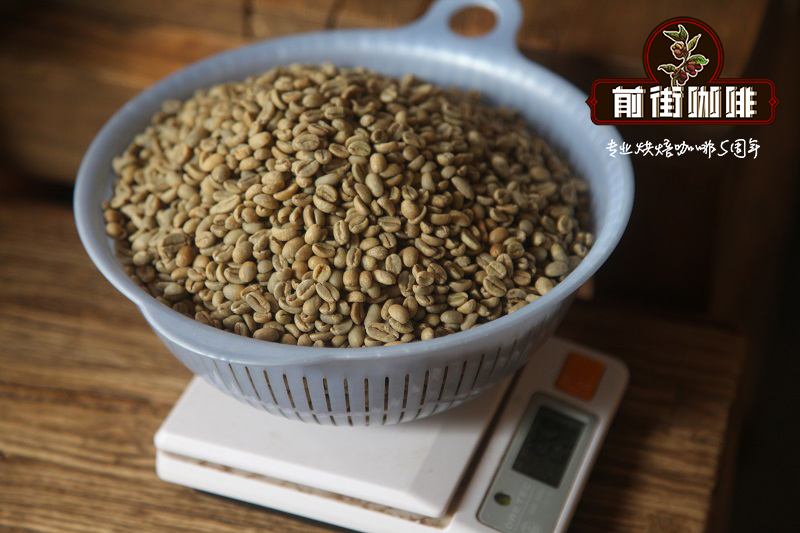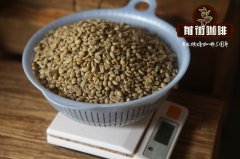What is the taste and flavor of Bolivian coffee Linda washed with long beans? How do you rush Bolivia?

Professional coffee knowledge exchange more coffee bean information please follow the coffee workshop (Wechat official account cafe_style)
What is the taste and flavor of Bolivian coffee Linda washed with long beans? How to wash beans with Bolivian coffee water before it tastes good?
Bolivia is one of the most difficult growing areas in the world, and transportation and climate are the biggest problems. After a special relationship of origin and cooperation this year, we strongly recommend high-altitude organic coffee with rich flavors such as cherry fruit, cream, chocolate and caramel. Directly obtained through Bolivian exporters this year, the coffee drying process is handled very carefully, using African-style drying sheds to enhance the advantages of coffee to the best condition. After the cup test, the flavor shows a very balanced and high sweetness, which can definitely satisfy the taste buds of Bolivian glutton.
Bolivia's boutique coffee is planted at an altitude of about 1200 to 2000 meters above sea level, and the planting area is concentrated near Caranavi, about a three-hour drive to the capital La Paz.
Commercial beans are produced in Santa Cruz producing areas below 1000 meters above sea level. The country's boutique coffee is mainly produced in micro-batches, with an average farm area of about 3 to 5 hectares, usually a family business.
Due to the steep terrain and inconvenient transportation, the visibility of Bolivian coffee in the international market was quite low in the early days. It was not until the 2004 CoE competition that people began to know more about Bolivian coffee.
Due to the pattern of micro-batch production, it is not easy for farmers to sell coffee directly to importers, so many cooperatives and production alliances have emerged to assist farmers in the export of coffee.
The Bolivian Coffee producers Union (Federation of Coffee Exporting Producers of Bolivia, referred to as FECAFEB) was founded in May 1991 and currently has 30 cooperative organizations located in Caranavi, North Yungas, South Yungas, Larecaja and Franz Tamayo in La Paz province, representing about 8500 coffee producing families. FECAFEB's board of directors has five members and rotates by democratic voting every two years. The main work of the alliance is to defend and protect the interests and rights of farmers, give advice on quality maintenance and organic planting techniques, assist farmers in marketing their coffee to the international market, set up treatment plants and make production plans, and so on. In addition, they also provide financial services for credit loans to farmers.
Almost all the coffee produced by FECAFEB is grown organically. At present, they can export about 19600 kilograms of coffee beans a year.
Bolivia Linda long bean washing
Producing area: Bolinda, Caranavi, Karana province
Farm: Linda Farm La Linda
Washing plant: Buena Vista Mill
Washing factory owner / farmer: Rodrigo Daniella and Pedro Rodriguez
Altitude: 1680 m
Bean species: long bean Longberry
Treatment: washing washed
Harvest time: July-September 2016
Flavor: sweet wood of Pu'er tea, corn, salted taffy chocolate, raisins
Linda Farm can be said to be the flagship farm in Rodrigo's Chaoyang project. Linda's Longberry, the first demonstration farm to experiment with different rare varieties, originated in Ethiopia, traveled through Indonesia, Cameroon, and Nicaragua in Central America, and finally spread to Bolivia. Long-shaped beans are delicious beans that can compete with rose summer, and like rose summer, they need high altitude to give full play to their wonderful flavor, and Bolivia, which is deep in the inland mountains, may be an ideal place to grow.
The flavor spectrum of Bolivian coffee makes Drop very excited. The high sweetness and delicious chocolate flavor are combined into a very special cup of coffee. In order to highlight the delicacy that Bolivian coffee can create, the Rodriguez family family has planted quite special varieties: Geisha and Java.
The Rodrigo family owns a water washing plant, Buena Vista Mill, which processes cherries sent by farmers in Caranarvi and Sud Yungas, and then packages them for export. For three decades, they have been looking for coffee from small coffee farmers. But when production continues to decline, their export business is also on the verge of crisis, and if even Rodrigo cannot support it, Bolivian coffee may even disappear in the future.
To meet the severe challenge, the Rodrigo family decided to grow their own coffee five years ago.
In 2012, the Rodrigo family began to buy a lot of farmland in the province of Caranavi, located 150km north of La Paz, Bolivia's largest city, with particularly fertile soil and high altitude, and has always been regarded as the center of Bolivian boutique coffee production. Rodrigo aims to create demonstration farms, using his own farms to demonstrate how to farm, educate other coffee farmers on sustainable farming, and increase the output of his own treatment plants. Not only that, they introduced a model of sustainable development for coffee farmers: sustainable economy, social understanding and environmental awareness, which they named the "Sol de Ma ñ ana". In five years, Rodrigo now has 12 farms, with the goal of expanding the acreage to 200 hectares.
Under the Chaoyang Project, La Linda Farm was Rodrigo's first farm, established in 2012, and can be said to be the leader of the whole project. The farm covers an area of only 10 hectares, of which 8 hectares grow coffee and ushered in its first harvest in 2015. In addition to Kaddura and Typica, some fairly rare beans are also grown, including San Bernardo, SL-28, and long beans (Longberry) from Ethiopia.
The local variety known as longberry in Bolivia is officially called Java, because the appearance of beans is quite long, similar to Rosa, and it is rare to see a rare variety that can compete with Rosa in flavor.
The local long bean variety in Bolivia gets its name because of its long appearance. Its official name should be Java. Java is a very interesting bean species, which is strongly related to Indonesia. But in fact, Java was originally a coffee tree species born in the primeval forest of Ethiopia, collected by local ethnic groups, and then spread to Indonesia through Yemen, where it was named Java. It was generally believed that Java is a branch of Tibika, but genetic comparison shows that Java is actually a coffee variety Abysinia from Ethiopia.
After Indonesia, Java spread first to the nearby Timor island group, and then to Cameroon in East Africa, where it was first released for farmers in 1980. As for the spread to Central and South America, it was introduced to Costa Rica through CIRAD (the Centre de Coop é Internationale en Recherche Agronomique pour le D é veloppement) in 1991 under the guidance of breeding expert Benoit Bertrand. The first Central American country to formally recognize Java beans was Panama in 2016, while Bolivia was introduced through Nicaragua.
As the name suggests, long beans have long fruits and seeds, brass buds, high plants but low yields. Because of its outstanding flavor, it has stronger resistance to leaf rust and coffee fruit disease, so it is very suitable for small farmers.
Qianjie recommended cooking methods: siphon, hand flushing
Degree of grinding: 3.5-4 (Japanese little Fuji R440)
KONO filter cup, 15g powder, water temperature 88 degrees, grinding 4, water powder ratio close to 1:14-15
Steaming in 30 grams of water for 30 seconds
Segment: water injection to 120ml cut off, slow water injection to 225ml
That is, 30-120-225
Important Notice :
前街咖啡 FrontStreet Coffee has moved to new addredd:
FrontStreet Coffee Address: 315,Donghua East Road,GuangZhou
Tel:020 38364473
- Prev

What are the coffee producing areas in Ecuador? How to rinse and boil the soybeans from the producing area of Samora, Ecuador
Professional coffee knowledge exchange more coffee bean information please follow the coffee workshop (Wechat official account cafe_style) which coffee producing areas in Ecuador? How to rinse and boil beans from Ecuador's Samora region? Coffee cultivation in Ecuador covers an area of 305.000 hectares, of which Arabigo coffee accounts for 68 per cent and Robusta coffee accounts for 32 per cent. Coffee
- Next

Does Bolivian coffee taste good by hand? How do you cook it? Bolivian Coffee Hauvignon Manor Organic Water
Professional coffee knowledge exchange more coffee bean information please follow the coffee workshop (Wechat official account cafe_style) hand-made Bolivian coffee tastes good? How would you like it cooked? What is the flavor of organic washed beans in Bolivian Coffee Hauvignon Manor? Flavor: clean and balanced, soft, sweet, fine acidity, caramel, milk chocolate, figs and cantaloupe Bolivia
Related
- Detailed explanation of Jadeite planting Land in Panamanian Jadeite Manor introduction to the grading system of Jadeite competitive bidding, Red bid, Green bid and Rose Summer
- Story of Coffee planting in Brenka region of Costa Rica Stonehenge Manor anaerobic heavy honey treatment of flavor mouth
- What's on the barrel of Blue Mountain Coffee beans?
- Can American coffee also pull flowers? How to use hot American style to pull out a good-looking pattern?
- Can you make a cold extract with coffee beans? What is the right proportion for cold-extracted coffee formula?
- Indonesian PWN Gold Mandrine Coffee Origin Features Flavor How to Chong? Mandolin coffee is American.
- A brief introduction to the flavor characteristics of Brazilian yellow bourbon coffee beans
- What is the effect of different water quality on the flavor of cold-extracted coffee? What kind of water is best for brewing coffee?
- Why do you think of Rose Summer whenever you mention Panamanian coffee?
- Introduction to the characteristics of authentic blue mountain coffee bean producing areas? What is the CIB Coffee Authority in Jamaica?

